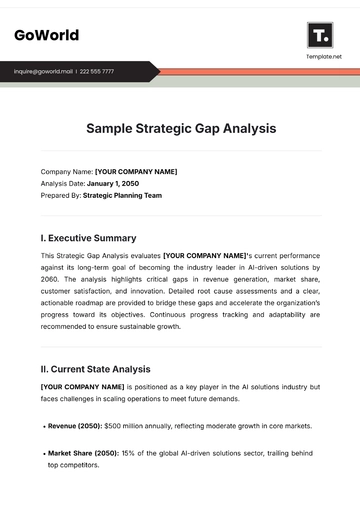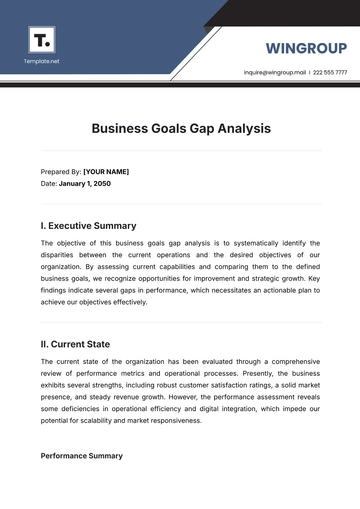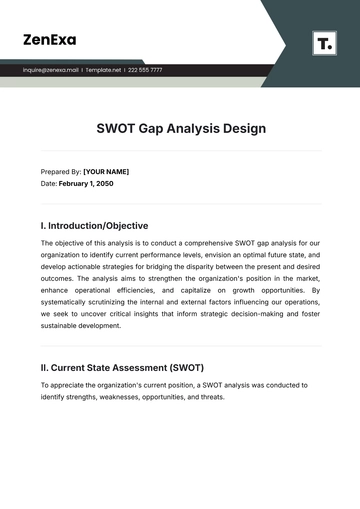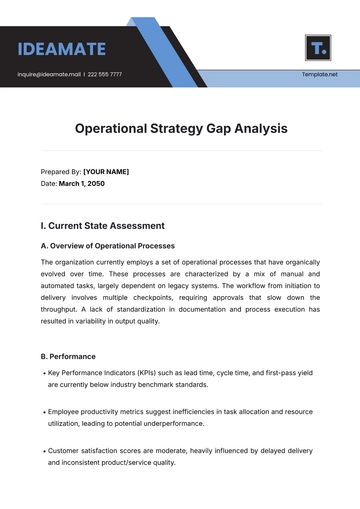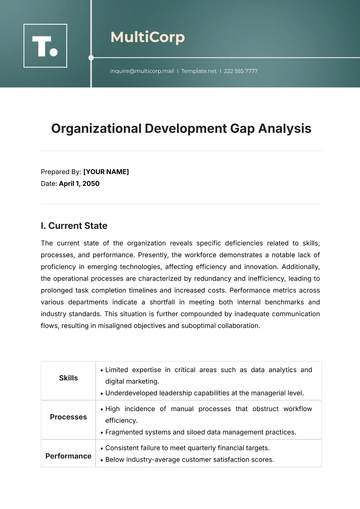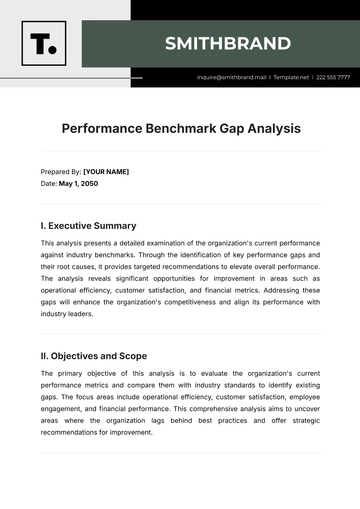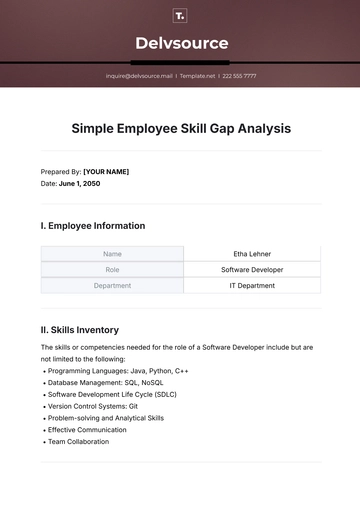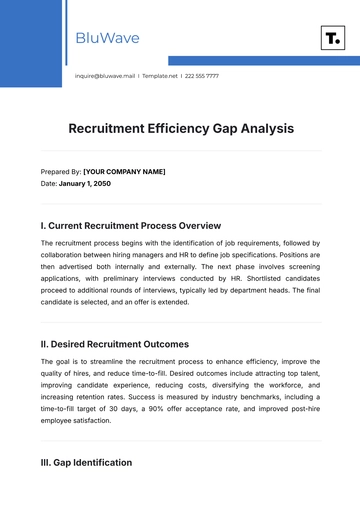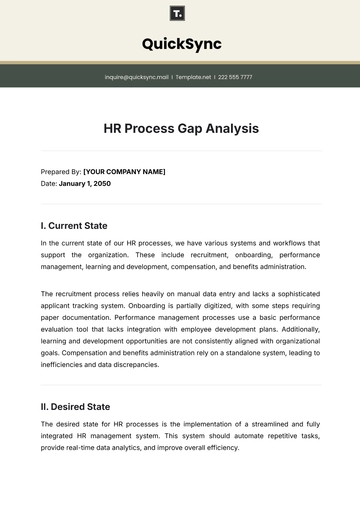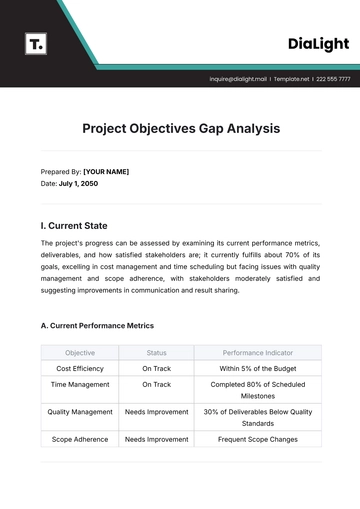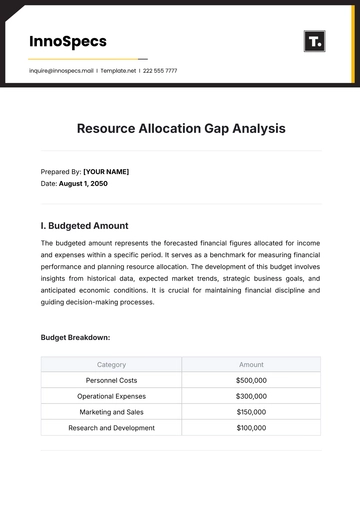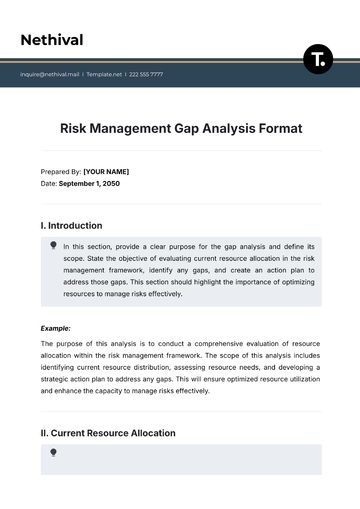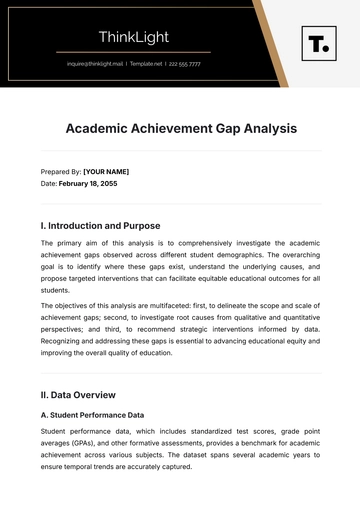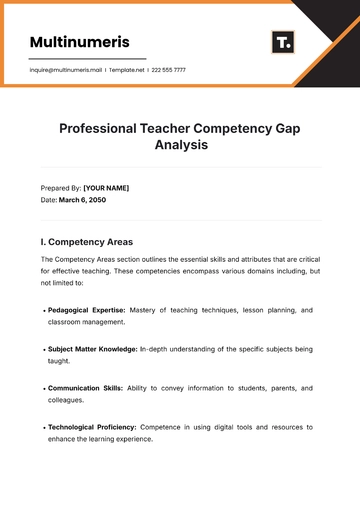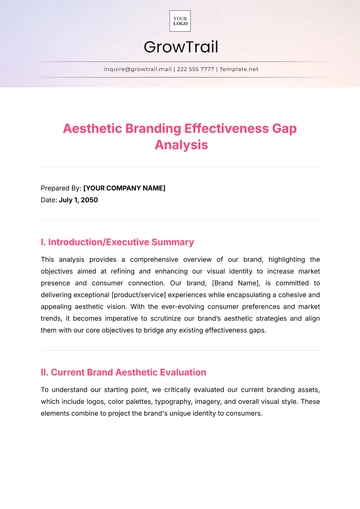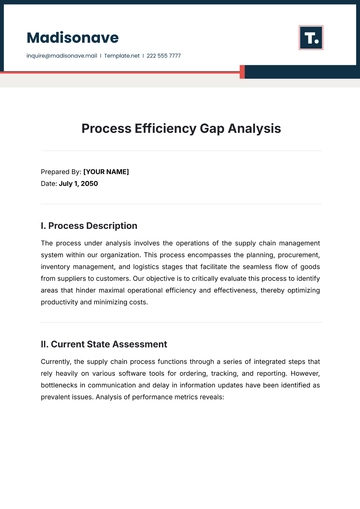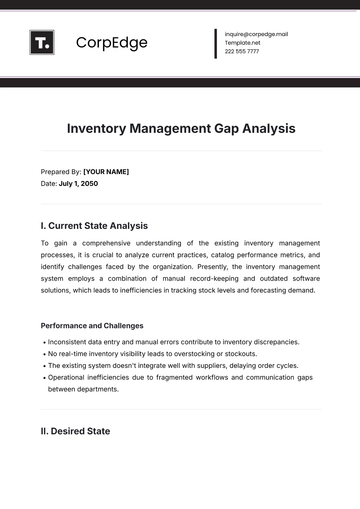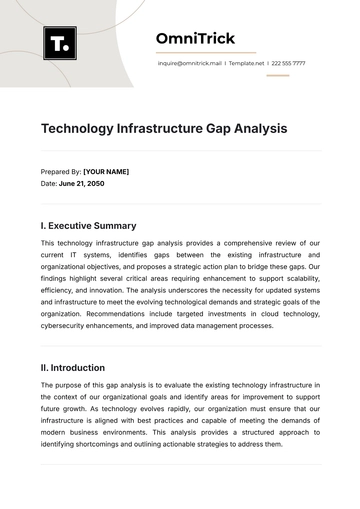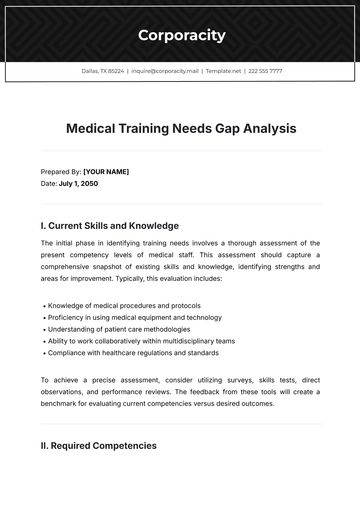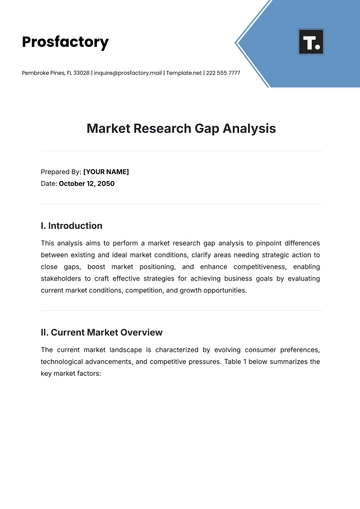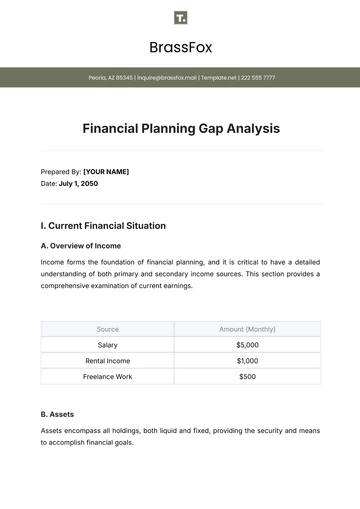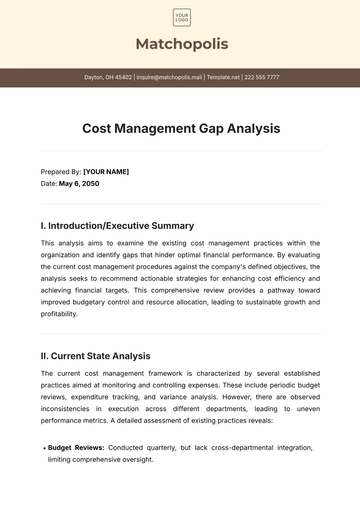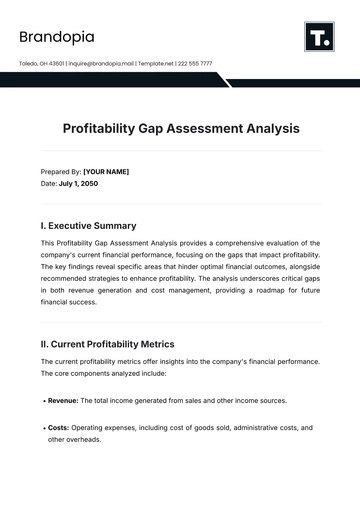Free Sales Strategy Analysis
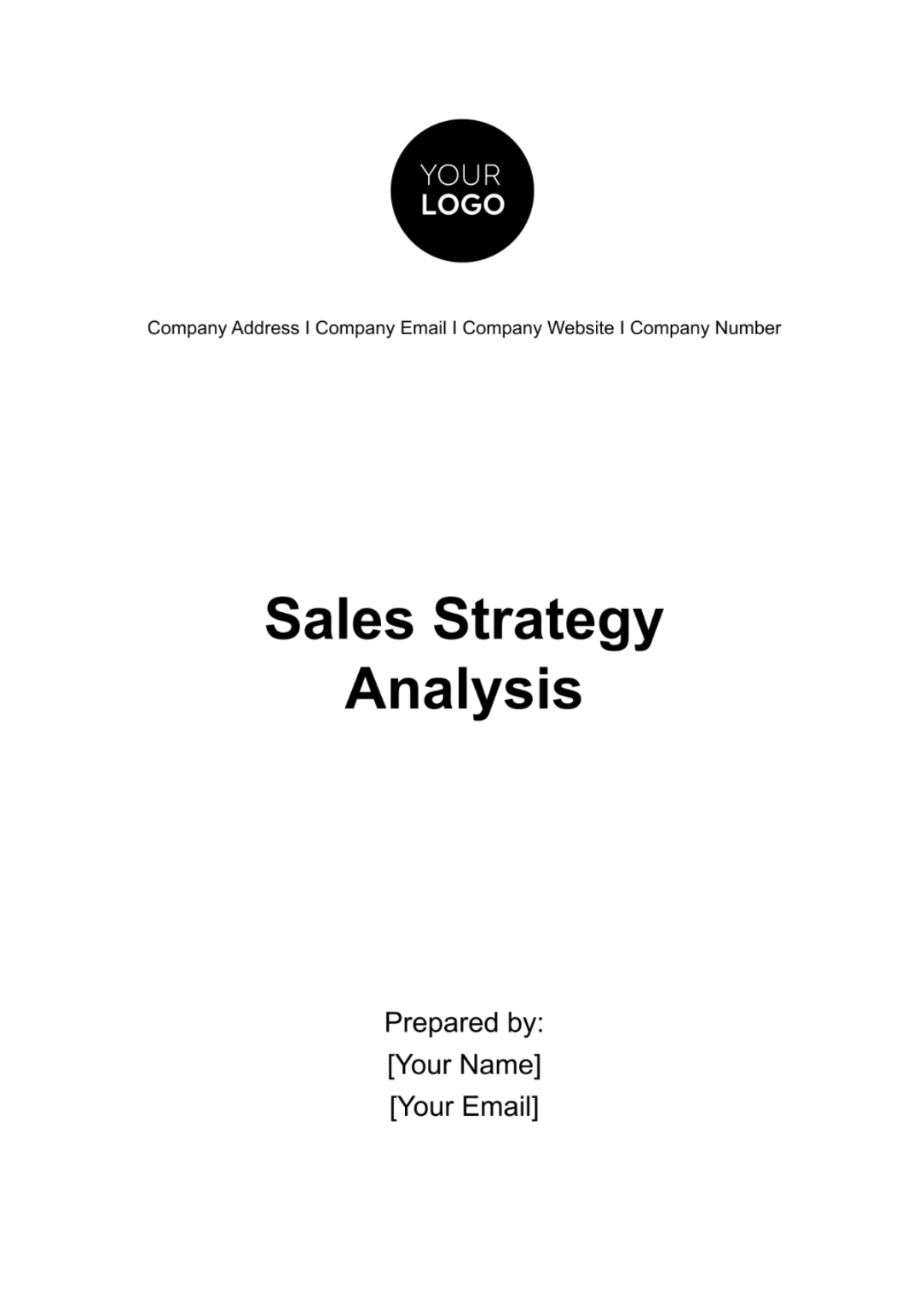
I. Introduction
The objective of this analysis is to evaluate the current sales strategies employed by [Your Company Name] and provide actionable insights into areas of improvement. This comprehensive study aims to contribute to a data-driven decision-making process that can refine the company's sales initiatives. The analysis delves into several key areas including sales metrics, customer segmentation, and the effectiveness of various promotional tactics.
A. Scope of the Analysis
The scope of this analysis is designed to offer a detailed examination of the sales strategies of the company over the fiscal years spanning from [Year] to [Year]. The analysis is partitioned into three core domains, each serving a distinct purpose in assessing the efficacy and efficiency of the company's sales initiatives. These domains are as follows:
Sales Metrics Overview: This domain concentrates on quantifiable performance indicators, such as total revenue, number of acquired customers, customer retention rate, and average order value. The objective is to provide a macroscopic view of the sales performance, thereby identifying strengths and exposing areas that may require optimization.
Customer Segmentation: Here, the focus shifts to a microscopic examination of the company's customer demographics. By categorizing customers into distinct segments based on attributes like buying habits, lifetime value, and frequency of purchase.
Effectiveness of Promotional Tactics: The final domain addresses the array of promotional strategies that the company has implemented. Metrics such as Return on Investment (ROI) and customer engagement rates will be scrutinized for different promotional avenues like seasonal sales, coupon distribution, and product bundling. The end goal is to determine the cost-effectiveness and impact of each tactic, enabling data-driven decisions for future promotional campaigns.
The findings drawn from each of these areas will serve as the foundation for the development of actionable recommendations intended to fortify and refine the current sales strategies.
II. Sales Metrics Overview
The Sales Metrics Overview serves as a critical component of this analysis, offering a quantitative assessment of the company's sales performance across key variables. The metrics scrutinized include total revenue, number of customers, customer retention rate, and average order value.
Fiscal Year | Total Revenue | Number of Customers | Average Order Value |
2050 | $1,200,000 | 1,800 | $200 |
Analytical Insights
The revenue demonstrates a steady year-over-year growth, escalating from $ [0] million in [Year] to $[0.0] million in [Year]. This ascending trend signifies the overall effectiveness of the existing sales and marketing strategies.
The customer base expanded from [0,000] to [0,000]. This growth suggests successful customer acquisition efforts. Yet, the marginal rate of this increase has slightly dwindled from [Year] to [Year].
An encouraging upward movement is observed in the customer retention rate, rising from [00]% in [Year] to [00]% in [Year]. While this increase demonstrates strong customer relationship management.
A slight yet consistent upward trend is witnessed in the Average Order Value (AOV), incrementing from $[00] in [Year] to $[000] in [Year]. Although positive, this growth rate suggests there is room for implementing upsell and cross-sell strategies more effectively to maximize revenue per customer.
This illuminates various strengths and areas for improvement in [Your Company Name]'s sales strategy. While revenue and customer metrics show promising upward trends, a closer inspection reveals opportunities for bolstering growth rates and enhancing customer value.
III. Customer Segmentation
Customer Segmentation offers an incisive analysis of the diverse customer base of the company, presenting a layered perspective on how different segments contribute to the company's revenue.
Customer Type | Percentage of Total Customers | Average Lifetime Value | Contribution to Revenue |
New Customers | 30% | $180 | 20% |
Analytical Insights
Making up [00]% of the total customer base, new customers contribute a disproportionately lower [00]% to overall revenue. While it's common for new customers to have lower initial value, the gap suggests an opportunity to enhance onboarding and upsell programs to accelerate the revenue from this segment.
Constituting [00]% of the customer base and contributing an equal proportion to revenue, this segment represents the backbone of the company's sales. Strategies targeting this group should aim at elevating them to premium or loyal status, thus enhancing their average lifetime value.
Accounting for [00]% of the customer base and contributing [00]% to total revenue, this segment presents a higher value per customer. The focus should be on maintaining this high level of engagement and exploring additional avenues for increasing their purchase frequency and basket size.
Although only comprising [00]% of the customer base, their high average lifetime value and [00]% revenue contribution indicate a strong affinity for the brand. Programs aimed at retaining these customers should be top-priority.
This reveals areas of inefficiencies as well as potential avenues for maximizing revenue through more targeted customer engagement strategies. The data indicates that while new and regular customers form the bulk of the customer base, premium and loyal customers contribute a share to revenue relative to their numbers.
IV. Effectiveness of Promotional Tactics
This part conducts a rigorous evaluation of the various promotional activities deployed by [Your Company Name] to stimulate sales and customer engagement. By focusing on metrics such as Return on Investment (ROI) and customer engagement rates, this aims to measure the success of each promotional tactic relative to its cost and impact. These findings are vital for allocating resources efficiently and fine-tuning the promotional strategies for optimum performance.
Promotional Tactic | ROI | Total Cost | Total Revenue Generated |
Seasonal Sales | 110% | $50,000 | $105,000 |
Analytical Insights
Exhibiting an ROI of [00]% and a customer engagement rate of 00[]%, seasonal sales prove to be a fairly effective promotional tactic. However, despite its effectiveness, there may be room for improvement, perhaps by better targeting or more appealing offers, to further optimize the ROI and engagement rates.
With an ROI of [00]% and an engagement rate of [00]%, coupons seem to have a lower impact compared to other promotional tactics. This calls for a reevaluation of how coupons are distributed and redeemed to improve their efficiency and appeal to a broader customer base.
Reporting the highest ROI of [00]% and an engagement rate of [00]%, product bundling emerges as the most effective promotional tactic. Given its high performance, the company could consider extending this tactic to various product lines to leverage its success.
This reveals the relative merits and shortcomings of each promotional strategy employed by [Your Company Name]. While product bundling clearly stands out as the most effective in terms of both ROI and customer engagement, seasonal sales and coupons exhibit room for improvement. This suggests that while the current promotional mix has been successful to an extent, there exists untapped potential for optimizing these strategies.
V. Recommendations for Future Actions
Upon comprehensive evaluation of the sales metrics, customer segmentation, and promotional tactics effectiveness, a series of recommendations for future actions have been formulated. These recommendations are aimed at driving revenue growth, elevating customer value, and optimizing promotional efficiencies for [Your Company Name]. Below, each recommendation is articulated in context with the analyzed data, thereby allowing for a more nuanced approach to implementing these future actions.
Optimize Pricing Strategy: Given the decelerating growth rate in total revenue, it is advisable to revisit the company's pricing strategy. Techniques such as dynamic pricing could be employed to attract a broader customer base while maximizing profitability.
Revamp Customer Acquisition Efforts: With the rate of customer acquisition slowing down, a review of current outreach methods is warranted. Investing in more targeted marketing campaigns may yield a higher conversion rate and subsequently, increase the customer base more effectively.
Enhance Onboarding Programs for New Customers: Given that new customers contribute a disproportionately lower amount to the revenue, implementing a robust onboarding program can help accelerate their transition to higher-value segments.
Implement Loyalty Programs for Regular Customers: To convert regular customers into premium or loyal customers, consider implementing or enhancing loyalty programs. This could include tier-based rewards, exclusive discounts, or personalized services.
Optimize Coupon Distribution: The lower ROI and engagement rates for coupons suggest a need for optimization. Consider employing machine learning algorithms to customize coupon offerings based on individual customer behaviors.
Expand Product Bundling: Due to its high ROI and engagement rate, product bundling should be extended to other product lines and perhaps, be made a permanent feature of the sales strategy.
The recommendations set forth are engineered to address the identified areas of opportunity within [Your Company Name]'s current sales strategy. By optimizing pricing and customer acquisition methods, there is potential to revitalize the growth rate in sales metrics. Adopting these recommendations should not only fortify the existing sales strategy but also position the company for sustainable growth and increased profitability in the years to come. Therefore, these proposed actions warrant serious consideration and, if possible, immediate implementation.
VI. Methodology and Limitations
Here we will provide insights into the methodology employed in carrying out this comprehensive sales strategy analysis for [Your Company Name]. Understanding the methodology is crucial for contextualizing the findings and recommendations. Moreover, this part outlines the limitations of the analysis, which stakeholders should consider when interpreting the results and implementing the recommendations.
A. Methodology
Data Collection: Primary data was obtained from [Your Company Name]'s internal databases, which includes sales records, customer transaction histories, and promotional campaign metrics for fiscal years [Year] to [Year].
Data Analysis: A variety of statistical techniques were applied to analyze the data, including descriptive statistics, regression analysis, and hypothesis testing.
Benchmarking: The findings were compared to industry benchmarks to evaluate the performance of the company relative to competitors and market standards..
B. Limitations
Data Completeness: While the analysis encompasses a wide range of variables, it is restricted by the availability and completeness of data.
Temporal Constraints: The data is restricted to the fiscal years [Year] to [Year], which may not fully capture longer-term trends or cyclical patterns.
External Factors: This analysis does not account for uncontrollable external factors like economic downturns, regulatory changes, or disruptions in supply chains that may affect sales performance.
By acknowledging the limitations and understanding the methodology, stakeholders will be better equipped to interpret the report's findings accurately and responsibly. Furthermore, this sets the groundwork for future research and analyses, aiding the company in continuously improving its sales strategies in a data-informed manner.
VII. Conclusion
Based on the analysis, [Your Company Name]'s sales strategy is showing positive results in several key metrics including revenue growth and customer retention. However, there are areas for improvement such as customer segmentation targeting and promotional strategies optimization. Recommendations include enhancing onboarding programs for new customers, creating tailored engagement for regular and premium customers, and refining promotional tactics to achieve higher ROI. Further studies could involve a more granular analysis of customer behavior, market trends, and competitive landscape to refine the existing sales strategies.
- 100% Customizable, free editor
- Access 1 Million+ Templates, photo’s & graphics
- Download or share as a template
- Click and replace photos, graphics, text, backgrounds
- Resize, crop, AI write & more
- Access advanced editor
Optimize your sales strategy with the Sales Strategy Analysis Template, available on Template.net! This template is not only editable and customizable but also seamlessly integrates our advanced AI Editor Tool. Tailor your analysis effortlessly, making data-driven decisions that propel your sales efforts forward. Navigate market dynamics with precision right away!

